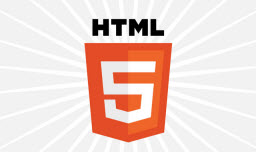HTML5 – Maturing Desktop Browser Support Opens The Door To Enhanced Commerce Experiences

eBusiness and channel strategy professionals are no strangers to HTML5. Ubiquitous support for the next generation of open web technologies (HTML5, CSS3, and JavaScript) across smartphones and tablets has made it easy for mobile development teams to start leveraging these technologies. However, fragmented browser support for HTML5 and CSS3 features on desktop browsers has thus far dampened the appetite of developers to embed HTML5 into their desktop eCommerce sites.
As we roll towards 2013, the tide is turning; leading online brands, including Apple, Best Buy, Four Seasons Hotels, and Rue La La to name a few, are now putting the features of HTML5 to use on their desktop sites with the goal of enhancing the online experience for customers using modern browsers like Chrome, Firefox, and IE9. We are at an inflection point: With consumer adoption of HTML5-“capable” desktop browsers widespread and web developer understanding of the technology rapidly maturing, HTML5 is no longer an emerging toolset for mobile and tablet development. Instead, it is fast becoming the de facto standard for web experience innovation across touchpoints.
As eBusiness teams evaluate the business case for HTML5 on the desktop, it is important to remember that this not an all-new technology— it is a collection of individual features that extend the existing W3C HTML standards. The decision to start using HTML5 or CSS3 does not require any changes to or throwing away of existing code. Instead, eBusiness teams can simply enhance the user experience of existing sites by incrementally using the new features of HTML5. HTML5 puts more tools in the box, but it doesn’t change the fundamentals of how to build the website.
In my latest report The Coming Of HTML5, I explore the important role that HTML5 and CSS3 have to play in the ongoing evolution of desktop eCommerce experiences. The report looks at the new capabilities that these technologies bring to the table and how eBusiness teams are putting these to use. I encourage you to download and read the report and I would be happy to discuss this topic with Forrester clients considering HTML5 for the backbone of their multi-touchpoint web strategy.